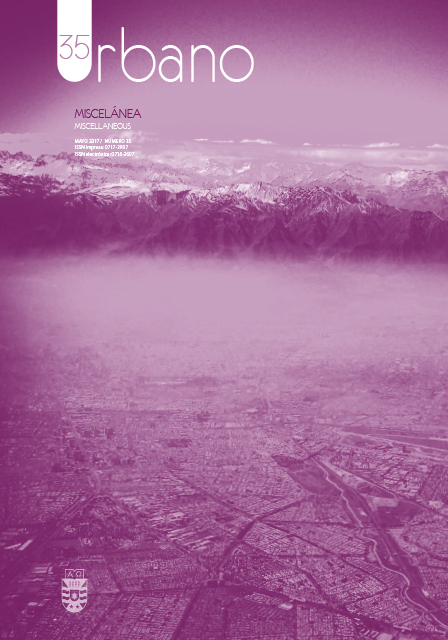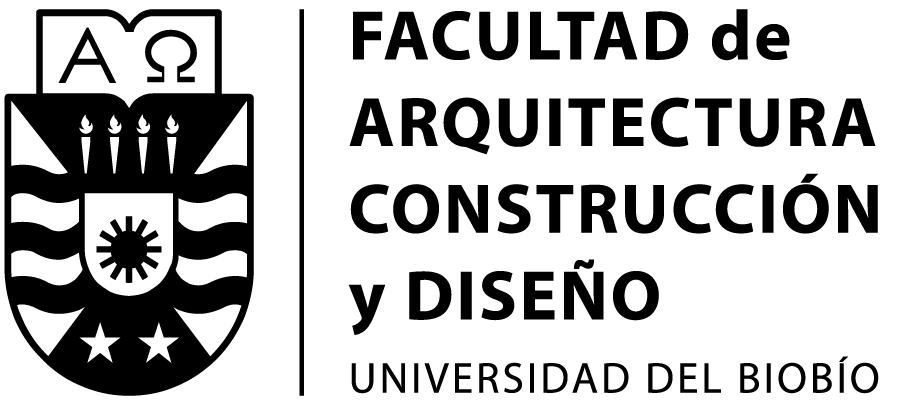Los vacíos urbanos: una nueva definición
DOI:
https://doi.org/10.22320/07183607.2017.20.35.09Palabras clave:
vacíos, periferia, bordes, intersticios, limitesResumen
El objetivo de esta investigación ha sido el de aportar una nueva definición de los vacíos urbanos a la disciplina urbanística. Puesto que el futuro de la ciudad deberá resolverse sobre su actual extensión en las próximas décadas, se considera de relevante interés analizar el papel que estos espacios puedan desempeñar en el futuro desarrollo urbano. La investigación parte de la definición del concepto de periferia de las ciudades como el espacio físico donde se producen los fenómenos urbanos objeto de estudio. Se tomaron como referencia las contribuciones de diversos autores que han trabajado y desarrollado términos que pueden ser aplicados a los vacíos urbanos tales como límites, bordes o fronteras de forma que se analizan, comparan y relacionan para concretar el término y conseguir una visión más amplia de los conocimientos existentes hasta el momento sobre el concepto de “vacíos urbanos”. De ese modo se consigue desarrollar una definición que integra todas las dimensiones que cada uno de los autores aporta y nos lleva a abrir las posibilidades y perspectivas para el desarrollo de la trama urbana, pasando de su entendimiento como receptáculos de procesos urbanizadores tradicionales a elementos vertebradores de los entornos periurbanos dentro del marco de una ciudad contemporánea sostenible.
Descargas
Citas
AUGÉ, Marc. Los no lugares. Espacios para el anonimato. Barcelona: Gedisa editorial, 2008. p.83.
AZEVEDO DE SOUSA, Claudia. Do cheio para o vazio. Metodologia e estratégia na avaliação de espaços urbanos obsoletos. Tesis de Arquitectura. Universidad Politécnica de Lisboa, 2010.
BATLLE, Enric. El Jardín de la metrópoli. Del paisaje romántico al espacio libre para una ciudad sostenible. Land &Scape Series Barcelona: Gustavo Gili, 2011.
BRU, Eduard. Coming from the South. Barcelona: Actar, 2001.
DE SOLÀ- MORALES, Ignasi. Territorios. 1ª ed. Barcelona: Editorial Gustavo Gili, 2002.
DE SOLÀ- MORALES, Ignasi .Terrain Vague. Anyplace, Anyone Corporation, Nueva York/ The MIT Press, Cambridge (Mass.), 1995, EUROPEAN ENVIRONMENT AGENCY. European Comission/Joint Research Center. Urban sprawl in Europe. The ignored challenge. EEA Report No 10/2006. Luxembourg: Office for Official Publications of the European Communities, 2006. [en linea]. [Consultado 13 enero 2015]. Disponible en: http://www.eea.europa.eu/publications/eea_report_2006_10/eea_report_10_2006.pdf
JACOBS, Jane. “La maldición de los vacíos fronterizos” En: MAXÍ, Zaida; VALDIVIA, Blanca y DELGADO, Manuel (edrs). Muerte y vida de las grandes ciudades. Madrid: Capitán Swing, 2011, pp. 293-305.
LYNCH, Kevin. La imagen de la ciudad. 8ª ed. Barcelona: Editorial Gustavo Gili. 2008.
MUÑOZ, Francesc. La producción residencial de baja densidad en la provincia de Barcelona (1985-2001). En INDOVINA, Francesco (coord.) La ciudad de baja densidad: lógicas, gestión y contención. Barcelona: Diputación de Barcelona, 2007, pp. 51-84
MUÑOZ, Francesc. “Lock-living: Urban sprawl in Mediterranean cities”. Cities. Elsevier, 2003 diciembre, vol. 20, nº 6, pp. 381–385. (Doi: https://doi.org/10.1016/j.cities.2003.08.003)
RODRÍGUEZ-TARDUCHY, María José. Forma y ciudad: en los límites de la arquitectura y el urbanismo. Madrid: Cinter Divulgación Técnica SLL. 2011.
SASSEN, Saskia. La Ciudad Global: Nueva York, Londres, Tokio. Buenos Aires: Eudeba, 1999.
Descargas
Publicado
Cómo citar
Número
Sección
Licencia
El contenido de los artículos y reseñas que se publican en cada número de Urbano, es responsabilidad exclusiva de los autores y no representan necesariamente el pensamiento ni comprometen la opinión de la Universidad del Bío-Bío.
Las/os autoras/es conservarán sus derechos de autor, sin embargo, garantizarán a la revista el derecho de primera publicación y difusión de su obra. La publicación del artículo en Urbano estará sujeta a la Licencia de Reconocimiento de Creative Commons CC BY-SA que permite a otros compartir-copiar, transformar o crear nuevo material a partir de esta obra para cualquier propósito, incluso comercialmente, siempre y cuando se reconozcan la autoría y la primera publicación en esta revista, y sus nuevas creaciones estén bajo una licencia con los mismos términos.![]()























